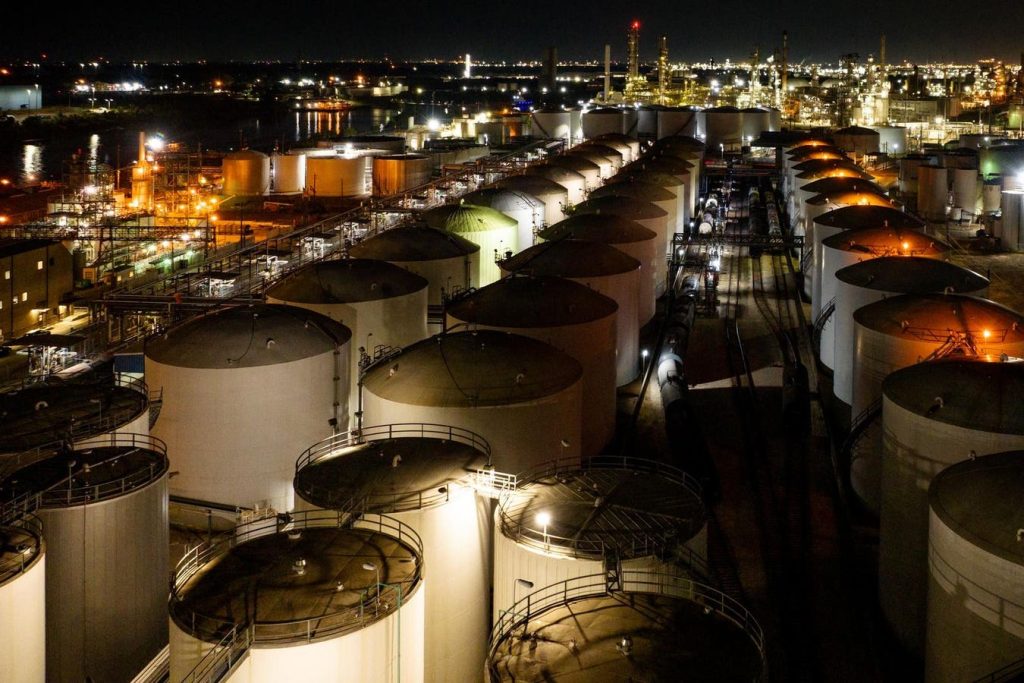Get ‘em while they’re cold.
That’s the idea behind my Casualty List, a quarterly compendium of stocks that have recently been knocked down, and that I believe will rise again.
You’d never guess it from watching the market averages, but about half of all U.S. stocks were down in the past three months. That gives me ample fodder for the Casualty List.
Valero
Leading off my second-quarter list is Valero Energy Corp. (VLO), a large oil refiner whose stock fell about 8% in April through June.
The rise of electric cars is denting gasoline demand, and warm winters are reducing the need for heating oil. In addition, refineries in Asia and Latin America are providing more competition for American ones.
I feel that the refiners have been punished too harshly. Valero, for example, still has a 5% after-tax profit margin, and scored a 27% return on stockholders’ equity in the past four quarters. Yet the stock sells for less than eight times recent earnings. (The median ratio is about 24.)
Analysts think earnings will fall this year, and in 2025 and 2026 too. My hunch is that they are too pessimistic.
D.R. Horton
Mortgage rates are a monkey wrench in the gears of the homebuilding industry. Lately, it costs close to 7% to finance a home. That’s the most in about 20 years, though considerably less than the rates in the 1970s and 1980s.
New home sales this spring were only a little above 600,000 per month. In homebuilding’s heyday (October 2002 to May 2006) they were over a million a month. I believe that there is big pent-up demand for houses, and that a boom for homebuilders is likely in 2025 if mortgage rates come down a peg or two.
D.R. Horton Inc. (DHI) is the nation’s largest homebuilder, selling houses at a variety of price points in 33 states. The stock, down 14% in the second quarter, goes for nine times earnings.
Metallus
Metallus Inc. (MTUS), of Canton, Ohio, makes steel and precision steel components. Its profitability is only so-so, but I like its balance sheet. Debt is a mere 3% of stockholders’ equity, and the company has almost $12 of cash for every dollar of debt.
This small stock ($858 million market value) is almost totally neglected by Wall Street. Only three analysts follow it, all from small firms. The stock, down 9% in the second quarter, fetches about 12 times earnings.
Ball
Ball Corp. (BALL), based in Westminster, Colorado, is the world’s larger maker of metal cans. It has been consistently profitable, and has increased its earnings by an average of about 6% a year over the past decade.
That’s not much compared to the big technology stocks that have captured investors’ hearts and money in recent year. But Ball’s net profit margin is 31%, in the same league as Microsoft Corp. (MSFT) at 36% and Apple Inc. (AAPL) at 26%. After dropping 11% in the second quarter, Ball trades for five times earnings.
Walgreens Boots
Troubles abound at Walgreens Boots Alliance Inc. (WBA), and its stock fell a sickening 43% in the second quarter. The company plans to close up to 25% of its 8,600 stores, and has considered separating the Walgreens chain in America from the Boots chain in Great Britain.
Yet for all its woes, Walgreens still earned $3.98 a share in 2023, and analysts predict that earnings will stay north of $3 a share through 2026. Given those estimates, the stock looks to me like a steal at the recent price of $11.26.
The Record
I’ve been compiling the Casualty list since 2000, and have one-year results for 81 lists. The average one-year return has been 14.69%, versus 11.00% for the Standard and Poor’s 500 Total Return Index.
Of the 81 lists, 51 were profitable and 39 beat the index.
Bear in mind that my column results are hypothetical and shouldn’t be confused with results I obtain for clients. Also, past performance doesn’t predict the future.
My list from a year ago advanced 24.08%, not quite enough to beat the S&P’s total return, which was 26.16%. My best pick from July 2023 was Acuity Brands Inc. (AYI), up 49%. My worst was Columbia Sportswear Co. (COLM), up less than 1%.
I had a modest gain on Occidental Petroleum Corp. (OXY) and a 39% gain in Valero, which now finds itself on the Casualty List again.
Disclosure: I own Apple personally and for almost all of my clients. My wife, a portfolio manager at my firm, owns Microsoft personally and for clients. I own D.R. Horton for one client. A hedge fund I manage owns call options on Walgreens Boots Alliance.
Read the full article here

